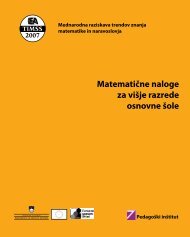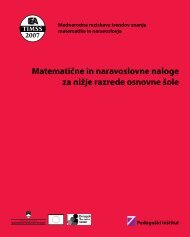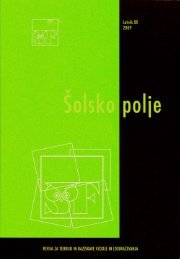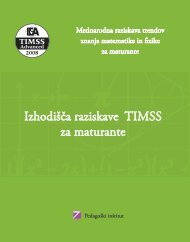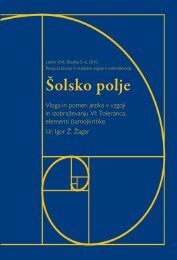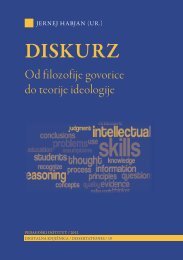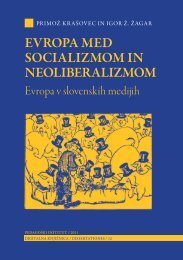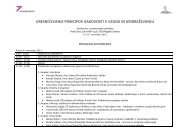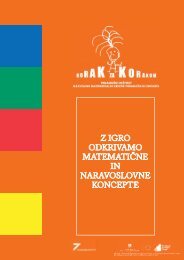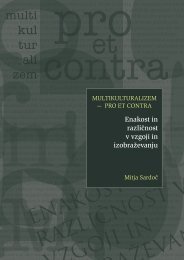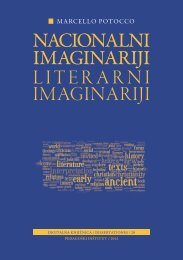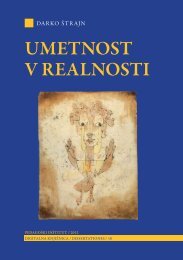Šolsko polje, letnik XX, številka 5-6, 2009: Vloga ... - Pedagoški inštitut
Šolsko polje, letnik XX, številka 5-6, 2009: Vloga ... - Pedagoški inštitut
Šolsko polje, letnik XX, številka 5-6, 2009: Vloga ... - Pedagoški inštitut
You also want an ePaper? Increase the reach of your titles
YUMPU automatically turns print PDFs into web optimized ePapers that Google loves.
48 ŠOLSKO POLJE LETNIK <strong>XX</strong> ŠTEVILKA 5/6and pragmatics, I will concentrate on this specific aspect: how topoi (and,consequentially, argumentation theory, are used in DHA as one of themost influential schools of CDA (curiously, other approaches (e.g. Fairclough(1995; 2000; 2003) or van Leeuwen (2004; 2008; van Leeuwen, Kress,2006)) don’t use topoi at all).Within argumentation theory, Wodak continues,»‘topoi’ or ‘loci’ can be described as parts of argumentation which belongto the obligatory, either explicit or inferable premises. They arethe content-related warrants or ‘conclusion rules’ which connectthe argument or arguments with the conclusion, the claim. As such,they justify the transition from the argument or arguments to the conclusion(Kienpointner, 1992: 194).« (Wodak, 2006: 74)We can find the very same definition in Discourse and Discrimination (Reisigland Wodak, 2001: 75), in The Discourse of Politics in Action (Wodak,<strong>2009</strong>: 42), in Michal Krzyzanowski’s chapter »On the ‘Europeanisation’ ofIdentity Constructions in Polish Political Discourse after 1989«, publishedin Discourse and Transformation in Central and Eastern Europe (Galasinskaand Krzyzanowski, <strong>2009</strong>: 102), and in John E. Richardson’s paper(co-authored with R.Wodak) »The Impact of Visual Racism: Visual argumentsin political leaflets of Austrian and British far-right parties« (manuscript,p. 3), presented at the 2008 Venice Argumentation Conference 2 .In addition to the above definition, Richardson (2004: 230) talks of topoi»as reservoirs of generalised key ideas from which specific statementsor arguments can be generated«. Surprisingly, both definitions take theconcept of topos/topoi as something self-evident, generally known andwidely used, as, for example, bread, table, engine, to write, to clean up,and many other everyday obviousnesses.Also, one could wonder about the purpose of the two definitions: aretopoi »content-related warrants« or are they »generalised key ideas«? Becausewarrants are much more than (just) ideas, they demand much moreto be able to secure the transition from an argument to a conclusion thanjust being »generalised ideas« (namely, a certain structure, or mechanism,in the form of an instruction or a rule). While ideas, generalised ideas, lack(at least) a kind of mechanism the warrants seem to poses in order to beable to connect the argument to the conclusion.




